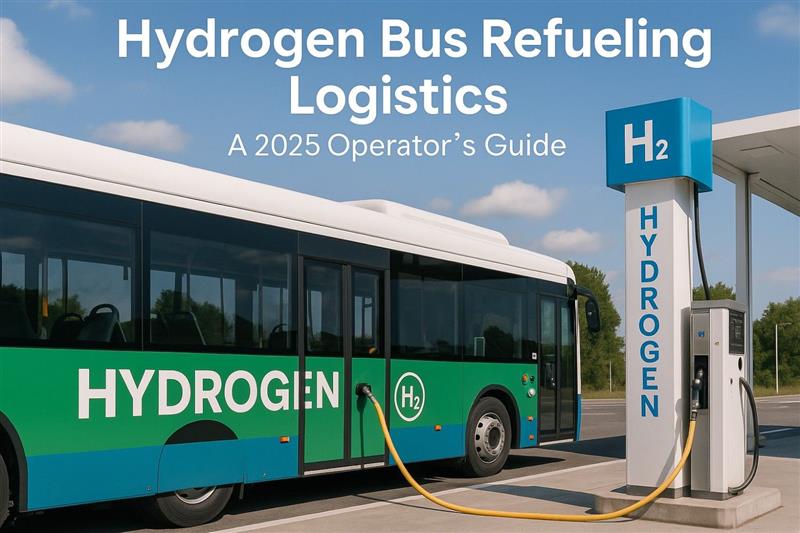When DOT inspectors arrive at your facility, are you confident in your maintenance documentation? For US manufacturing professionals managing fleet operations, maintenance logs compliance isn't just about avoiding fines—it's about protecting your business, ensuring operational continuity, and maintaining your reputation in the industry.
Traditional paper-based maintenance logs are becoming a liability. They're prone to errors, difficult to organize, and nearly impossible to quickly access during surprise audits. The solution? Implementing DOT audit software that transforms your maintenance processes into a streamlined, audit-ready system.
Why Audit-Ready Maintenance Logs Matter for Manufacturing
Manufacturing facilities with fleet operations face unique challenges. Your vehicles and equipment are the backbone of your supply chain, and any compliance issues can trigger costly shutdowns. Here's what makes audit-ready maintenance logs essential:
- Immediate Compliance Verification: Inspectors can access complete maintenance histories instantly, reducing audit time and stress
- Reduced Downtime: Proactive maintenance scheduling prevents unexpected equipment failures
- Cost Savings: Avoid hefty fines and operational disruptions that can cost thousands per day
- Improved Safety: Comprehensive maintenance records help identify potential safety issues before they become incidents
The key is having a system that doesn't just track maintenance—it creates a comprehensive audit trail that satisfies DOT requirements while improving your operational efficiency.
The Cost of Poor Maintenance Documentation
Let's talk numbers. A single DOT violation can result in fines ranging from $1,000 to $25,000 per offense. But the real cost goes beyond fines:
Operational Impact: When equipment is taken out of service due to compliance issues, your entire production schedule can be disrupted. Manufacturing facilities typically lose $50,000 to $100,000 per day during unplanned shutdowns.
Administrative Burden: Scrambling to compile maintenance records during an audit consumes valuable time from your maintenance team and operations managers. This reactive approach often leads to incomplete documentation and additional violations.
Reputation Risk: Compliance issues can damage relationships with customers who depend on your reliable delivery schedules. In manufacturing, reputation is everything.
The solution is implementing digital logs that automatically capture and organize maintenance data in real-time, eliminating the guesswork and stress of manual documentation.
Essential Features of DOT Audit Software
Not all maintenance software is created equal. When selecting a system for your manufacturing operation, look for these critical features:
Real-Time Data Capture: The system should automatically log maintenance activities as they occur, creating an unbreakable chain of documentation. This eliminates the risk of forgotten entries or backdated records.
Automated Compliance Alerts: Your software should proactively notify you when maintenance is due, inspections are approaching, or compliance deadlines are near. This prevents issues before they become violations.
Instant Report Generation: During audits, you need to produce comprehensive reports immediately. The right system generates DOT-compliant reports with a single click, showing maintenance schedules, completion records and compliance status.
Mobile Accessibility: Your maintenance team needs to access and update records from anywhere on your facility. Mobile-friendly interfaces ensure accurate, real-time documentation.
Integration Capabilities: The software should seamlessly integrate with your existing ERP systems, inventory management, and scheduling tools to create a unified operational ecosystem.
Implementing Digital Maintenance Logs: A Step-by-Step Approach
Transitioning from paper-based systems to digital maintenance logs doesn't have to be overwhelming. Here's a practical implementation strategy for manufacturing professionals:
Phase 1: Assessment and Planning
Start by auditing your current maintenance processes. Identify which vehicles and equipment fall under DOT
regulations and catalog your existing documentation. This baseline assessment helps you understand the scope of your
digital transformation.
Phase 2: System Selection and Setup
Choose a DOT audit software that aligns with your operational needs. During setup,
configure maintenance schedules, create equipment profiles, and establish user permissions. The right system should
be intuitive enough that your team can start using it immediately.
Phase 3: Team Training and Adoption
Invest in comprehensive training for your maintenance team. Focus on daily workflows, mobile app usage, and report
generation. The more comfortable your team is with the system, the more accurate and complete your documentation
will be.
Phase 4: Data Migration and Validation
Transfer existing maintenance records into the new system. This is crucial for maintaining historical compliance
records. Validate data accuracy and ensure all equipment has complete maintenance histories.
Maximizing ROI Through Automated Fleet Compliance
The return on investment for audit-ready maintenance logs extends far beyond compliance. Manufacturing facilities that implement comprehensive digital maintenance systems typically see:
Reduced Maintenance Costs: Predictive maintenance scheduling based on actual usage data can reduce maintenance costs by 20-30%. Instead of following rigid schedules, you maintain equipment based on real-world conditions.
Improved Equipment Lifespan: Consistent, well-documented maintenance extends equipment life by 15-25%. This reduces capital expenditure requirements and improves budget predictability.
Enhanced Operational Efficiency: Automated scheduling and mobile access eliminate administrative overhead. Your maintenance team spends more time on actual maintenance and less time on paperwork.
Better Decision Making: Comprehensive maintenance data provides insights into equipment performance, helping you make informed decisions about repairs, replacements, and operational improvements.
The key is selecting a system that grows with your operation and provides the flexibility to adapt to changing regulations and business needs.
Conclusion: Your Path to Audit-Ready Excellence
Audit-ready maintenance logs aren't just about compliance—they're about creating a foundation for operational excellence. By implementing the right DOT audit software and establishing robust digital maintenance processes, you're not just preparing for your next audit; you're building a system that improves efficiency, reduces costs, and enhances safety across your entire operation.
The question isn't whether you can afford to implement digital maintenance logs—it's whether you can afford not to. With the right system in place, you'll transform audit anxiety into audit confidence, knowing that your maintenance documentation is comprehensive, accurate, and instantly accessible.
Take the first step toward audit-ready maintenance logs today. Your future self will thank you when the next DOT inspection becomes a routine verification rather than a stressful scramble.








